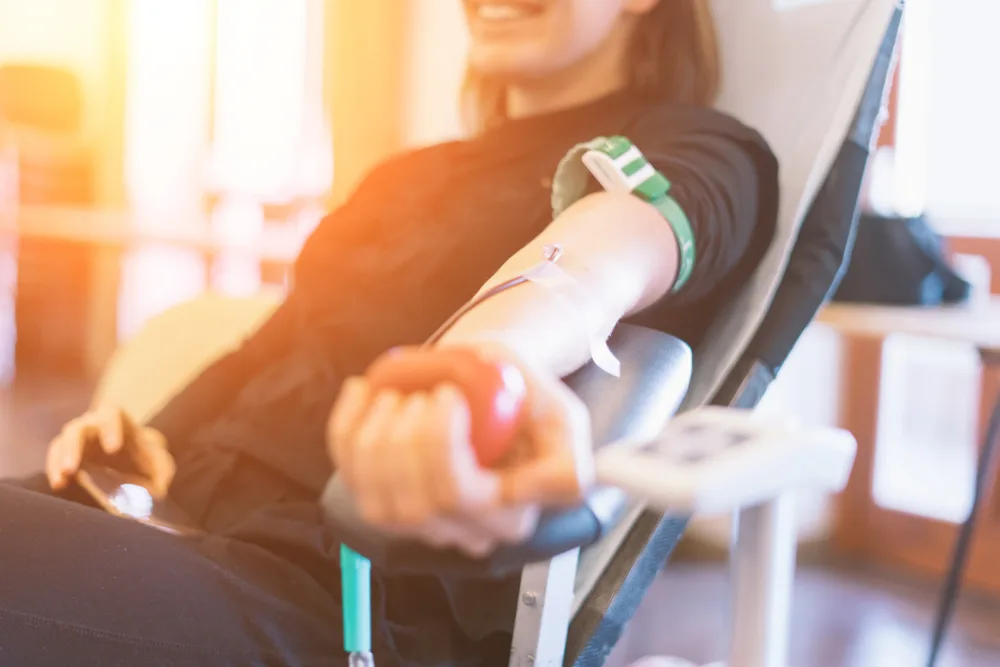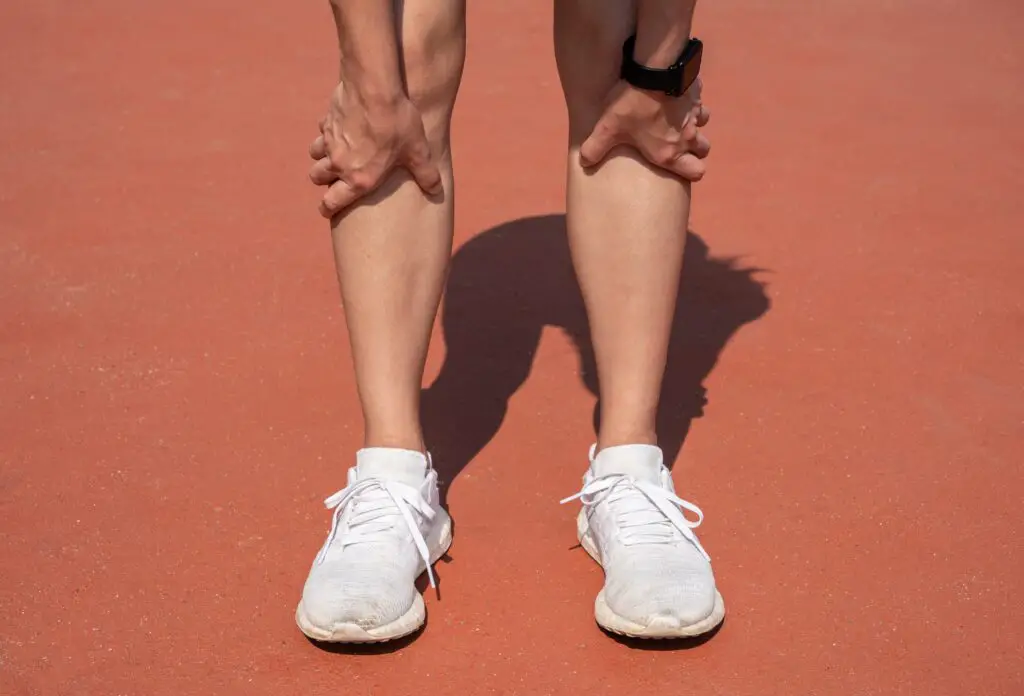Table of Contents
TRANSCRIPT
We live in a time of medications. They help us somewhat, but they can also kill us silently. Now, as we age, our kidneys won’t work as smoothly. It’s important to keep them away from too many chemicals and medicines. But it’s challenging because aging often brings a host of health issues and more pills to take.
Certain medications can be nephrotoxic, meaning they can cause direct or indirect harm to the kidneys (1, 2). As a result, the kidneys’ ability to filter blood diminishes and harmful waste builds up, leading to serious health issues. Kidney damage severity is measured in stages, ranging from mild dysfunction to complete failure (3, 4, 5).
The risk of kidney damage from drugs, or drug-induced nephrotoxicity, increases as you age and have kidney conditions (6). There are two main types of kidney damage from medications: dose-dependent toxicity and idiosyncratic toxicity. Dose-dependent toxicity means that damage increases with higher doses (7, 8). In contrast, idiosyncratic toxicity is unpredictable and varies greatly between people. Sometimes, it’s best to avoid these drugs altogether (4, 7).
Drug-induced nephrotoxicity can result from muscle tissue breakdown (rhabdomyolysis), kidney tissue death (renal infarction), and acid buildup (renal tubular acidosis). This can result in decreased kidney function and other conditions like nephrotic syndrome or electrolyte imbalances (9).
In this video, we’ll explore the impact of common medications on kidney health and provide practical tips for managing these drugs safely. Remember, understanding the risks associated with them can empower you to make informed decisions about your healthcare. Stay tuned and learn how to protect your kidneys while effectively treating other medical conditions.
Before we dive in, kindly note that all information you’ll find in this video is produced by humans, and for humans. You can visit our website at healthtoday.com to see our advisory board and the team behind these videos.
We do not use artificial intelligence writing tools like ChatGPT to automatically generate content. Be assured, our information is thoroughly fact-checked, unbiased, and reviewed by qualified professionals. Alright, it’s time to swing back to the medications that can be harmful for your kidneys!
Common Medications That Can Damage Your Kidneys
7. Antibiotics
Antibiotics are prescribed often, but they are not without risk. Does your doctor prescribe antibiotics for your sore throat, skin infection, or other infection? If so, it could be harming your kidneys (10). First, let’s take a look at what antibiotics are.
Antibiotics, also known as antibacterials or antimicrobials, are a group of medications designed to combat bacterial infections. They work either by killing bacteria or preventing them from reproducing (11). You can find common antibiotics with the brand names like Cipro, Augmentin, Flagyl, Bactrim, or Amoxicillin (12).
These drugs could be prescribed to treat strep throat, pneumonia, urinary tract infections (UTIs), or skin infections. Antibiotics can treat these bacterial infections. But they can’t treat viral infections, such as colds, flu, bronchitis, most coughs, and most sore throats (10). So, you should be extra cautious when your doctor prescribes antibiotics. If prescribed improperly, you might experience side effects such as diarrhea and liver and kidney problems (13, 14).
Even when properly used, some antibiotics, such as polymyxins, aminoglycosides, and vancomycin, can harm your kidneys (13, 15). Simply put, your kidneys play a crucial role in removing antibiotics and other drugs from your body. But beware: Antibiotics like polymyxins may damage kidney cell membranes, possibly causing kidney injury. Similarly, another antibiotic, aminoglycosides, can accumulate in kidney cells, causing cell death and harming kidney tubules. In general, the mechanism by which each antibiotic causes kidney injury is still not fully understood, but it might involve inflammation and harm to kidney cells (15, 16).
For antibiotics to be effective, and safe for kidney health, it’s important to use them correctly. Did you know that nearly one-third of antibiotics prescribed in the United States aren’t even appropriate for the conditions being treated? That’s according to a report from the Centers for Disease Control and Prevention (CDC) and a study published in the Journal of the American Medical Association (17, 18).
Before you ask for an antibiotic or if your doctor prescribes one, knowing which conditions they can treat is important. You can ask them, “Is this necessary?” and most doctors will gladly explain why it’s needed. If antibiotics are truly needed, follow the dosage exactly as instructed and adhere to any food requirements (10). Even if you feel better, never save antibiotics for future use or give your prescribed antibiotics to someone else, as prescriptions are tailored to individual health needs and conditions (11).
6. Nonsteroidal anti-inflammatory drugs (NSAIDs)
Some may not recognize nonsteroidal anti-inflammatory drugs (NSAIDs), but have you heard of ibuprofen, aspirin, motrin, ketorolac, celecoxib, or naproxen? Yes, they’re all NSAIDs, and you can purchase some of them without a prescription (14). In fact, NSAIDs are very common: Over 30 million people take them daily (19). NSAIDs are commonly used to ease headaches, sprains and strains, colds and flu, and pain from arthritis (14, 20).
At their core, NSAIDs mainly work by blocking an enzyme called cyclooxygenase (COX). This enzyme helps produce pain-causing substances (19, 21). However, COX is also important for protecting the kidneys during stress and helping regulate sodium and water excretion. So, when NSAIDs block COX, it’s a big reason why these drugs can harm your kidneys (21, 22).
In fact, all NSAIDs can cause acute kidney injury (AKI), especially in older people, and when taken in high doses or over extended periods (19). This injury appears in two main ways: one because blood flow changes and the other because of inflammation, both caused by blocking COX (19, 22).
First, blocked COX can narrow kidney blood vessels, reducing blood flow. This can lead to fluid retention, high blood pressure, and even mild temporary kidney impairment (19, 23). If this goes unchecked, it might cause more severe issues like acute tubular necrosis, where kidney tubules die due to lack of oxygen, and acute kidney failure.
Even though this can initially look like acute kidney failure, it could eventually progress to chronic kidney disease (23, 24).
Second, although NSAIDs are anti-inflammatory drugs, prolonged use can trigger inflammation in kidney tubules, the tiny structures that filter waste (24, 25). This inflammation is rare, but overall, kidney issues stemming from NSAIDs are a big concern, affecting 1%–5% of daily users worldwide (25). This means that each year, around 500,000–2.5 million people experience kidney injury from NSAIDs (22, 25).
What’s worse, these drugs are often involved in hospital admissions because of adverse drug events, some of which can be deadly (26).
A 2006 study published in the Journal of the American Society of Nephrology analyzed data from over 10,184 people who were prescribed NSAIDs for various conditions (27). The results showed that NSAID use raised the risk of acute kidney injury by 26%, especially within the first 30 days of use. This result emphasizes the need for caution when prescribing and using these medications.
In another study, scientists looked at 99 patients with chronic musculoskeletal pain who took NSAIDs for 12 months (28). They found that most patients’ kidney function decreased after NSAID use but returned to normal after switching to another pain-reliever drug.
Now, the next set of drugs on our list might surprise you because they’re typically considered pretty good for your kidneys!
5. Diuretics
Diuretics help with conditions like fluid retention or swelling, often seen in heart and kidney failure and liver cirrhosis (29). Some diuretics are available over the counter, but prescription diuretics are typically stronger. Common diuretics includes hydrochlorothiazide (or HCTZ), bumetanide (in Bumex), furosemide (sold as Lasix), spironolactone (found in Aldactone), and acetazolamide (in Diamox) (29).
They work by increasing urine output. They’re also good for expelling excess salt and water through urine (30), which can help with hypertension or high blood pressure, a leading risk factor for kidney disease (29, 31). Thus, diuretics are generally suitable for your kidneys (30, 32).
While diuretics are beneficial overall, they don’t come without risks, especially concerning kidney health. In fact, they don’t directly damage the kidneys or affect their filtering function like NSAIDs. Instead, they act further down the kidney’s process, altering the urine’s concentration and composition. This increases the amount of urine or changes the levels of electrolytes in it. So, excessive use or high doses of diuretics can lead to dehydration—a risk factor for kidney damage (32).
A study looked at 131 patients using diuretics and having acute kidney injury from 1999 to 2010 at a hospital (33). At first, 96.2% of the patients already had at least one health issue before starting diuretics, with chronic kidney disease (CKD) being the most common at 55.0%. They found that patients who used diuretics had higher rates of kidney disease and its risk factors like hypertension and diabetes. The higher the dose, the bigger the risk. Also, about 27.5% of the cases of acute kidney injury were caused by diuretics alone, while others were due to a combination of diuretics and other drugs. So, always consult your doctors before starting new medications with diuretics (34).
For people with CKD who are taking diuretics, it’s important to stay hydrated and regularly check for electrolytes and kidney function (34, 35, 36). Nowadays, there are more home testing options available than ever before. So, people can now check their kidney function from the comfort of their own homes (37).
4. Proton pump inhibitors (PPIs)
Proton pump inhibitors (PPIs) are widely used medications available over the counter. These drugs effectively treat conditions like gastroesophageal reflux disease (GERD) or acid reflux by reducing stomach acid production (38). This is because PPIs target an enzyme in the stomach called H+/K+-ATPase or proton pump, which is crucial for acid secretion (39). Although PPIs are generally safe and great at soothing acid-related discomfort such as heartburn, they still carry risks, particularly for kidney health (40).
For example, PPIs have been linked with acute interstitial nephritis (AIN), a kidney disorder characterized by inflammation in the spaces between the kidney tubules (40). Even though only a tiny number of PPI users develop AIN, this drug has become a common cause of drug-induced AIN in developed countries. More concerning, AIN caused by PPIs often shows no apparent signs and often goes unnoticed. So, long-term PPI use may lead to lower kidney function and acute sudden kidney injury. Over time, this can even progress to CKD (38, 40).
An often-overlooked side effect of long-term PPI use is low magnesium levels in the blood or hypomagnesemia, which is linked to CKD (38). Simply put, hypomagnesemia can disrupt your electrolyte balance and cause inflammation, triggering kidney disease. Low magnesium can also lead to other serious health problems, including muscle spasms, seizures, and irregular heartbeats (38).
A 2019 cohort study in the Journal of Pharmacotherapy investigated the effects of PPIs on kidney function (41). This study checked how PPI use relates to new cases of acute kidney injury (AKI) and chronic kidney disease (CKD) in a large group of people.
When they examined a group of 93,335 people, they found that those taking PPIs had a 4.35 times higher risk of AKI compared to those who didn’t. Similarly, taking PPIs was linked to a higher risk of CKD. When researchers examined a group of 84,600 people, PPI users had a 1.2 times higher risk of CKD compared to non-users (41). So, people taking PPIs should have regular check-ups to monitor their kidney function and magnesium levels.
After all, don’t let the solution to one problem become the source of another. While PPIs can provide significant relief from acid-related issues, long-term use of them can harm your kidneys and cause other problems, such as infections, fractures, or nutritional deficiencies (42). So, it’s important to take PPIs for the shortest time possible to relieve acid-related issues without raising the risk of side effects (42, 43).
3. ACE inhibitors
Angiotensin-converting enzyme (ACE) inhibitors are prescription medicines widely prescribed to lower blood pressure and manage conditions affecting the heart, blood vessels, and kidneys (44). Common ACE inhibitors are lisinopril (sold as Zestril, Prinivil), ramipril (found in Altace), enalapril (in Vasotec), and benazepril (in Lotensin) (45).
These drugs work by blocking an enzyme that produces angiotensin II, which narrows blood vessels and increases blood pressure. By stopping this enzyme in its tracks, ACE inhibitors help relax blood vessels, thereby lowering blood pressure and reducing stress on the heart (46, 47). Normally, ACE inhibitors also improve blood flow to the kidneys, easing the workload on these vital kidney-shaped organs. This enhanced blood flow can protect the kidneys, especially over the long term. Moreover, ACE inhibitors may help reduce the presence of protein in the urine—a common problem in chronic kidney conditions (48). In fact, ACE inhibitors are commonly recommended for people with kidney disease.
While these medications boast protective benefits, they’re not without risks. When you mix them with NSAIDs and diuretics, your risk of AKI can increase. Also, when you don’t drink enough water to meet your body’s needs, taking ACE inhibitors can put you at more risk of AKI. If you’re concerned about your risk of AKI when taking these drugs, it’s best to talk to your doctor about ways to lower it (49).
Some people are concerned that ACE inhibitors might decrease your estimated glomerular filtration rate (eGFR). Typically, a higher eGFR suggests better kidney function. However, ACE inhibitors reduce eGFR by relieving pressure on the kidneys, allowing the small filters, called glomeruli, to relax. While this may cause a slight decline in eGFR, it doesn’t indicate kidney trouble; it simply means the kidneys are relaxing. However, sometimes, eGFR may drop too much (49). This is especially risky in patients with heart failure, chronic kidney disease, or blockage in both renal arteries (bilateral renal artery) (50). If this occurs, your doctor may adjust your dosage or stop the medicine temporarily to find the cause (49).
Note that in rare cases, particularly in patients with conditions like heart failure or severe dehydration, ACE inhibitors can cause acute renal failure. However, once stopping the medication, most patients recover without lasting kidney damage, even after needing dialysis. (51, 52).
So, patients with heart failure, diabetes, or CKD benefit from ACE inhibitors because they ease the strain on the kidneys and offer long-term kidney protection. However, dosages should be adjusted carefully, and kidney function should be regularly checked (46, 51).
2. Antiviral drugs
Most viruses clear up without antiviral drugs, but doctors prescribe them for serious or long-lasting infectious diseases like COVID-19, Ebola, flu, genital herpes, hepatitis B and C, and HIV (53). These drugs can clear the flu and combat other viruses from your body (54). For a flu, two common antiviral drugs are oseltamivir (Tamiflu) and zanamivir (Relenza). In contrast, for chronic infections like HIV, hepatitis, and herpes, antivirals can’t cure them completely, but they can ease symptoms and reduce their severity (53).
Antiviral drugs offer many benefits in treating viral infections, yet their potential to harm the kidneys cannot be overlooked (55). This risk, whether from direct toxicity or crystal buildup that can cause kidney stones, is a serious concern. Careful management and customized treatments are necessary, especially for people with existing kidney problems (55, 56).
Let’s take, for example, remdesivir, a drug for emergency use in COVID-19 cases. Remdesivir contains a substance called SBECD, which is mainly removed from the body by the kidneys. In people with kidney issues, SBECD might build up and cause kidney toxicity (57). Some clinical trials have inconsistently reported a decrease in kidney function with remdesivir. Moreover, data from global databases showed a significant increase in cases of acute kidney failure associated with remdesivir compared to other COVID-19 drugs (58). However, there hasn’t been enough large-scale clinical data to confirm whether remdesivir is safe or harmful for people with kidney issues, so further studies are necessary to provide clarity in this area (59).
Besides remdesivir, the use of more effective antiviral drugs often leads to drug-induced acute kidney injury (56). Some antiviral drugs like cidofovir, adefovir, foscarnet, acyclovir, interferon, and tenofovir can directly cause cell death in kidney tubules by reducing blood flow or increasing toxins. This condition is called acute tubular necrosis (55, 56). Additionally, the antiviral drug atazanavir can cause inflammation in the interstitial tissue of the kidneys, impairing kidney function. Also, acyclovir, indinavir, and foscarnet can cause crystals buildup in the kidneys, blocking the kidney tube (56).
In contrast, some antiviral drugs like Viread and Foscarnet can help manage kidney damage, but they also pose a notable risk of kidney failure. Therefore, taking these drugs under close medical supervision is crucial to safeguard the kidneys.
Also, to safely use antiviral drugs, never skip doses or inconsistently take them. This practice can lead to virus adaptation, making the antiviral less effective. This is called antiviral resistance (53). Also, note that antiviral drugs are only available with a prescription, so don’t buy them online or from unofficial sources (54).
1. Lithium
Lithium is a prescription medication for mood stabilizing and certain mental illnesses. These mental problems include mania, where one feels highly excited, overactive, or distracted, and bipolar disorder, which causes mood swings between extreme highs (mania) and lows (depression) (60). Some brand names of lithium are Priadel, Camcolit, Liskonum, and Li-Liquid (61). For over 60 years, these drugs have enhanced the lives of many individuals suffering from bipolar disorder (62).
While lithium can be a lifeline for calming mood, its impact on the kidneys cannot be ignored. Long-term use of lithium can lead to some serious kidney issues, including both acute and chronic kidney disease, as well as kidney cysts (60, 63, 64). Early on, kidney damage from lithium might be reversible, but it could become permanent with time (65, 66).
The main issue with lithium use is a type of diabetes linked to kidney damage called nephrogenic diabetes insipidus (65). This isn’t your typical diabetes caused by high blood sugar. In this condition, your kidneys can’t respond properly to a hormone called antidiuretic hormone (ADH), which controls fluid balance. The result? One may have excessive thirst and too many trips to the bathroom (62, 67). In rare cases, long-term use of lithium can even lead to end-stage renal disease (ESRD) (67).
Symptoms of kidney trouble from lithium include excessive urine output and thirst, frequent nighttime urination, and signs of dehydration like low blood pressure and fast heartbeat. In severe cases, it can cause changes in mental status (65).
Moreover, lithium can make the kidneys excrete too much sodium, a condition known as hyponatremia. Sudden hyponatremia, where sodium levels drop quickly in less than 48 hours, can cause serious problems if not treated, including life-threatening muscle breakdown (rhabdomyolysis), severe confusion, seizures, coma, and even death (68). So, patients should maintain a regular diet with enough salt and fluids while taking lithium (66).
Moreover, when on lithium, it’s important to define a suitable dosage, get yearly blood tests to check creatinine levels and seek medical help if anything seems wrong (65, 69, 70, 71). Lithium can harm you in many ways, not just by damaging kidneys. So, before starting it, let your doctor know if you have kidney, heart, thyroid, or breathing problems, Addison’s disease, or Brugada syndrome (60, 61).
Extra tips for cautious use
Do you suspect that your medication is affecting your kidney health? It’s important to seek medical advice right away. Symptoms of kidney failure might not be apparent initially, but as the condition worsens, signs such as decreased urine output, swelling in the legs, shortness of breath, and severe fatigue become more evident. If untreated, the consequences can be life-threatening (5, 72). Let’s ensure you remember these symptoms to know when to act
If you are taking any of the medications that have been discussed in this video, check your kidney function regularly using tests that include blood creatinine levels, glomerular filtration rate (GFR), and urine tests for protein.
Proper hydration helps your kidneys clear sodium, urea, and toxins from the body, which can mitigate the impact of nephrotoxic drugs.
Be aware of potential interactions between your prescriptions that could impact your kidney health. Share all your current medications with any healthcare provider who prescribes a new drug.
Summary
Yes, medications are essential for treating various medical conditions, yet certain drugs pose significant risks to kidney health and should be used cautiously, especially in individuals with existing kidney disease or those predisposed to kidney disease. Antibiotics, NSAIDs, diuretics, proton pump inhibitors, ACE inhibitors, antiviral drugs, and lithium all have the potential to impair kidney function through mechanisms ranging from direct toxicity to effects on renal blood flow and electrolyte imbalances.
For those with kidney disease, it is crucial to avoid or carefully manage the use of these medications. Patients should work closely with healthcare providers to select treatments that minimize risk to the kidneys, adjust dosages as necessary, and monitor kidney function regularly.
A healthy lifestyle can help you keep medication to a minimum. Try to eat a balanced diet with lean protein, fruits and vegetables, and exercise regularly to protect your kidneys from any damage.
Source
- Which Drugs are Harmful to Your Kidneys?
- Drug Therapies Affecting Renal Function: An Overview
- 10 Signs You May Have Kidney Disease
- Drug-Induced Acute Kidney Injury
- Chronic Kidney Disease
- The Mechanism of Drug Nephrotoxicity and the Methods for Preventing Kidney Damage
- Unveiling drug induced nephrotoxicity using novel biomarkers and cutting-edge preventive strategies
- Drug-induced nephrotoxicity
- Drug-Induced Nephrotoxicity and Its Biomarkers
- Antibiotics: When you need them and when you don’t
- Antibiotics
- Antibiotics 101
- Antibiotics: When Do We Really Need Them?
- NSAIDs
- The Risk and Clinical Implications of Antibiotic-Associated Acute Kidney Injury: A Review of the Clinical Data for Agents with Signals from the Food and Drug Administration’s Adverse Event Reporting System (FAERS) Database
- 5 Drugs You May Need to Avoid or Adjust if You Have Kidney Disease
- Prevalence of Inappropriate Antibiotic Prescriptions Among US Ambulatory Care Visits, 2010-2011
- Antibiotic Do’s & Don’ts
- Nonsteroidal Anti-Inflammatory Drugs and the Kidney
- Kidney function and use of nonsteroidal anti-inflammatory drugs among elderly people: a cross-sectional study on potential hazards for an at risk population
- NSAIDs in CKD: Are They Safe?
- Pathophysiological aspects of nephropathy caused by non-steroidal anti-inflammatory drugs
- NSAIDs and kidney
- NSAIDs and Acute Kidney Injury
- Acute interstitial nephritis observed with three different triggering agents
- Non-steroidal anti-inflammatory drug induced acute kidney injury in the community dwelling general population and people with chronic kidney disease: systematic review and meta-analysis
- NSAID Use and Progression of Chronic Kidney Disease
- Impact of Non-steroidal Anti-inflammatory Drug Administration for 12 Months on Renal Function
- Diuretics
- Diuretics and the kidney
- CKD Risk Factors
- Diuretic use in renal disease
- Diuretics associated acute kidney injury: clinical and pathological analysis
- Medication Safety Principles and Practice in CKD
- Revisiting diuretic choice in chronic kidney disease
- Diuretics for people with chronic kidney disease
- At-home urine self-testing using a smartphone
- Proton Pump Inhibitors and Risk of Chronic Kidney Disease: Evidence from Observational Studies
- The relationship between proton pump inhibitors and renal disease
- PPIs and kidney disease: from AIN to CKD
- Proton Pump Inhibitors and Risk of Acute and Chronic Kidney Disease: A Retrospective Cohort Study
- Proton Pump Inhibitors
- Proton Pump Inhibitors, Kidney Damage, and Mortality: An Updated Narrative Review
- ACE Inhibitors and the Kidney
- Angiotensin Converting Enzyme Inhibitors
- Safety of ACE inhibitor therapies in patients with chronic kidney disease
- Angiotensin-converting enzyme inhibitors in chronic renal failure
- Using ACE Inhibitors and ARBs in Advanced Chronic Kidney Disease Does Not Worsen, and May Improve, Renal Outcomes
- Angiotensin-converting enzyme (ACE) inhibitors & angiotensin receptor blockers (ARBs)
- ACE Inhibitors
- ACE inhibitors and the kidney. A risk-benefit assessment
- Long-term follow-up of acute renal failure caused by angiotensin converting enzyme inhibitors
- Antivirals
- Antiviral medication (flu treatment and prevention): important information
- Antiviral Drug-Induced Nephrotoxicity
- Antiviral Drugs and Acute Kidney Injury (AKI)
- Remdesivir
- Remdesivir and Acute Renal Failure: A Potential Safety Signal From Disproportionality Analysis of the WHO Safety Database
- Remdesivir in COVID-19 Patients with Impaired Renal Function
- Lithium
- Who can and cannot take lithium
- Lithium and the Kidney
- Drug information update. Lithium and chronic kidney disease: debates and dilemmas
- Cystic kidney disease in a patient with long-term lithium therapy
- Lithium and Chronic Kidney Disease
- Lithium
- Lithium in the Kidney: Friend and Foe?
- Hyponatremia (low sodium level in the blood)
- A clinico-pathological study of lithium nephrotoxicity
- LITHIUM NEPHROTOXICITY
- Lithium nephrotoxicity
- Symptoms-Chronic kidney disease

















Comments
0